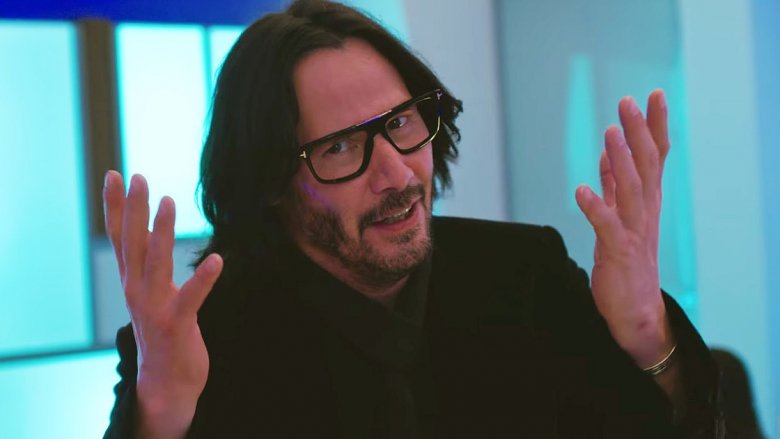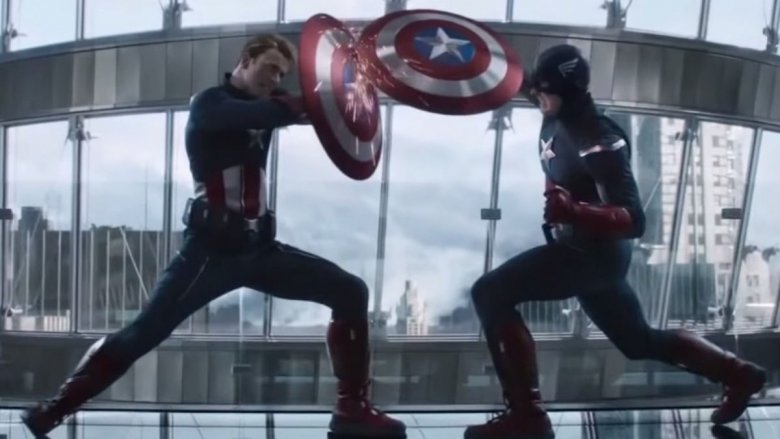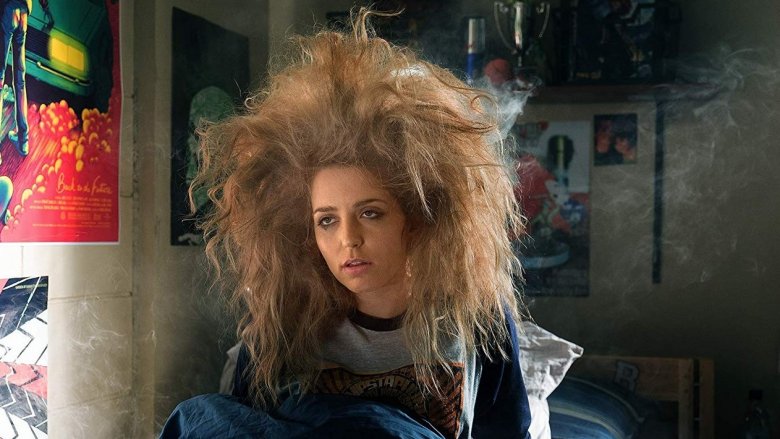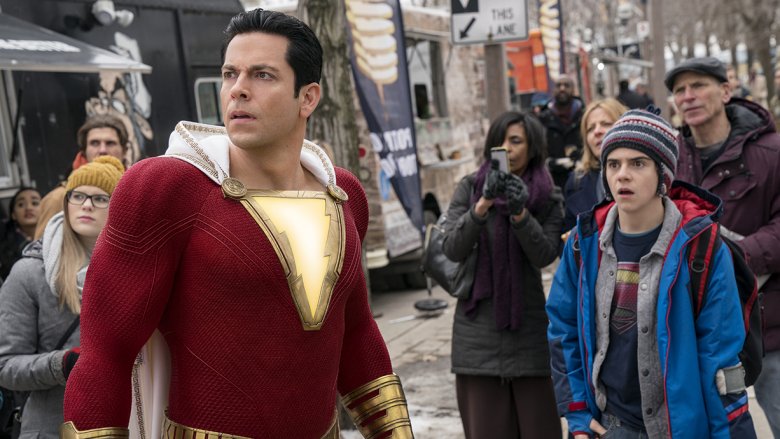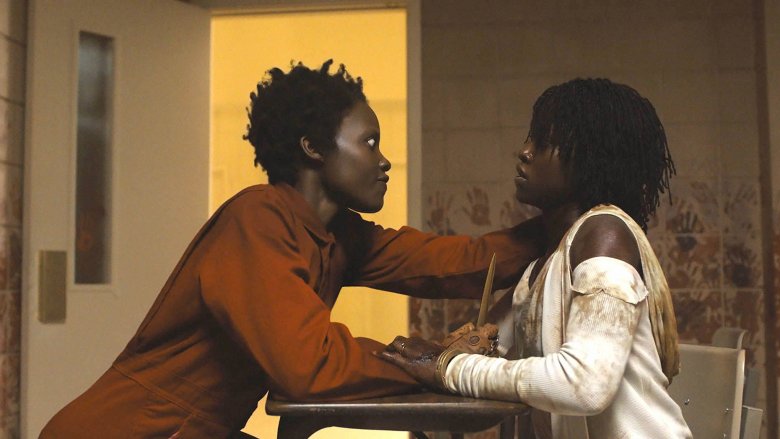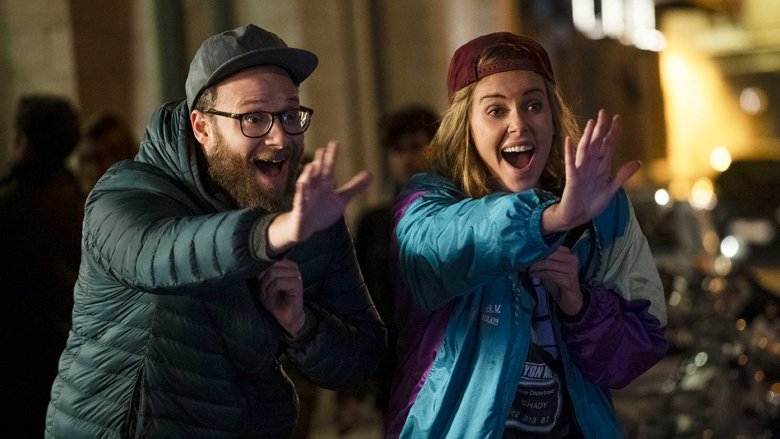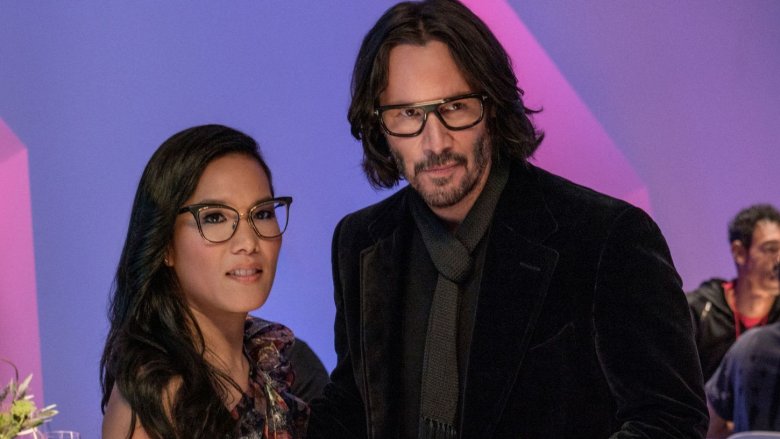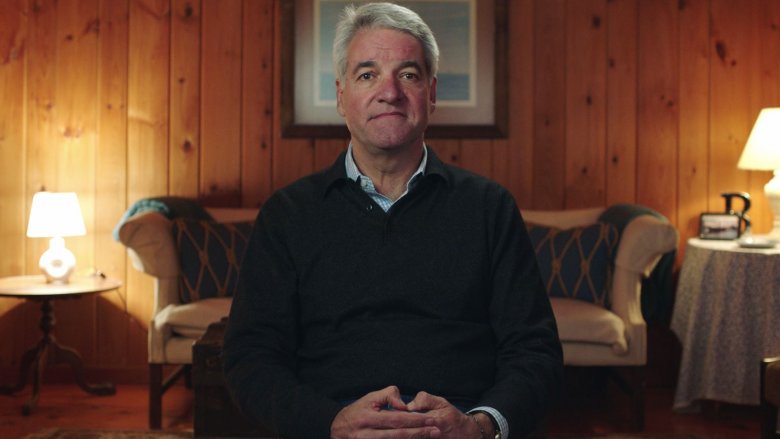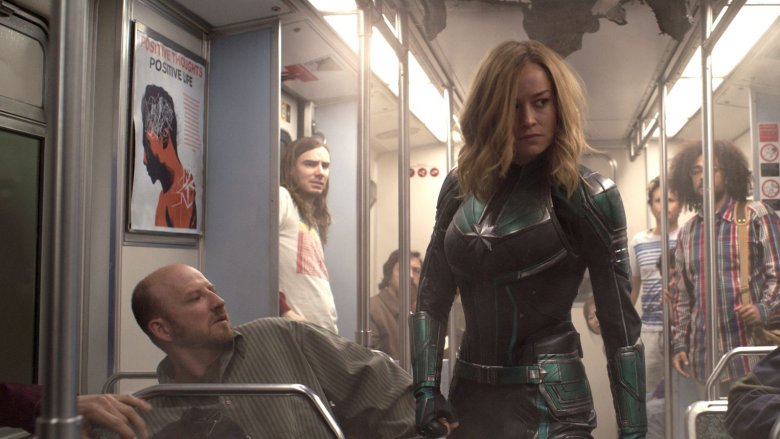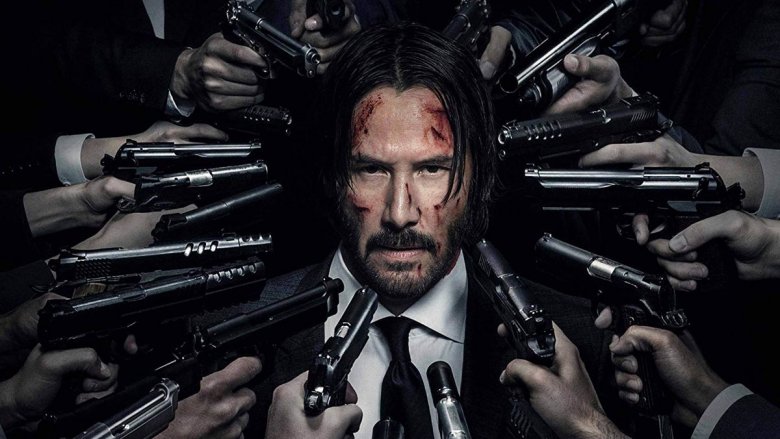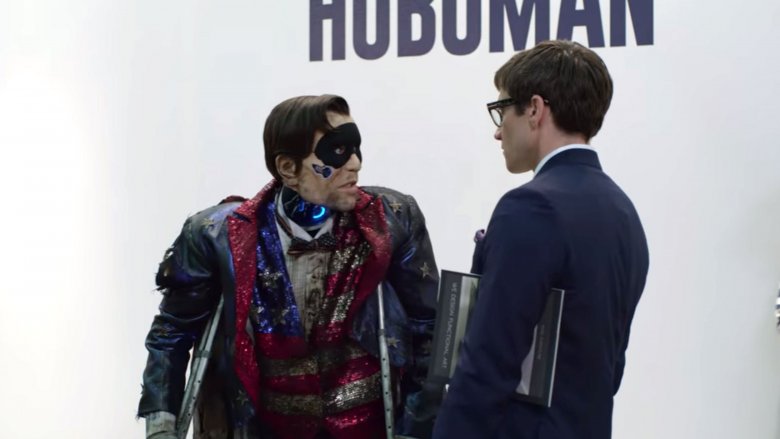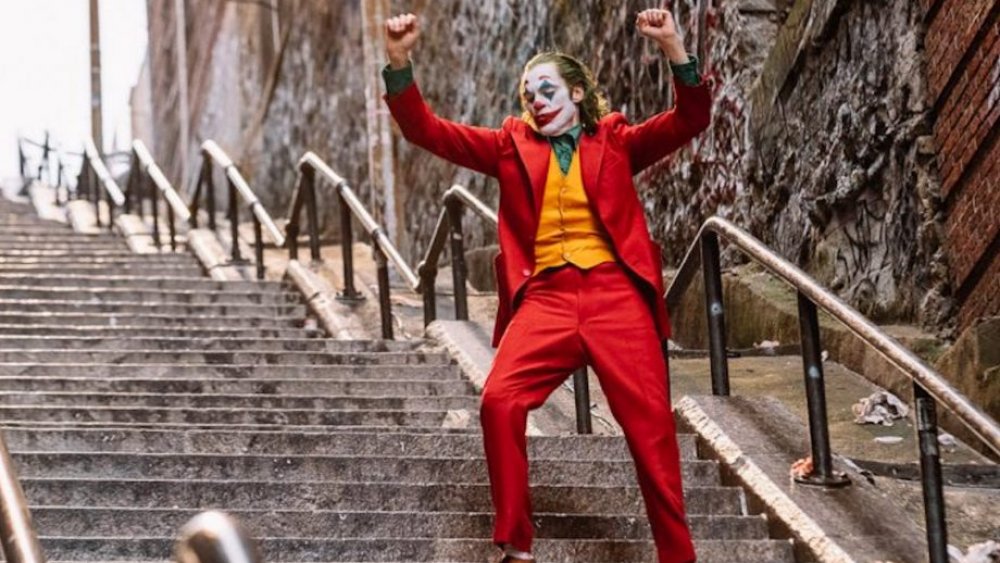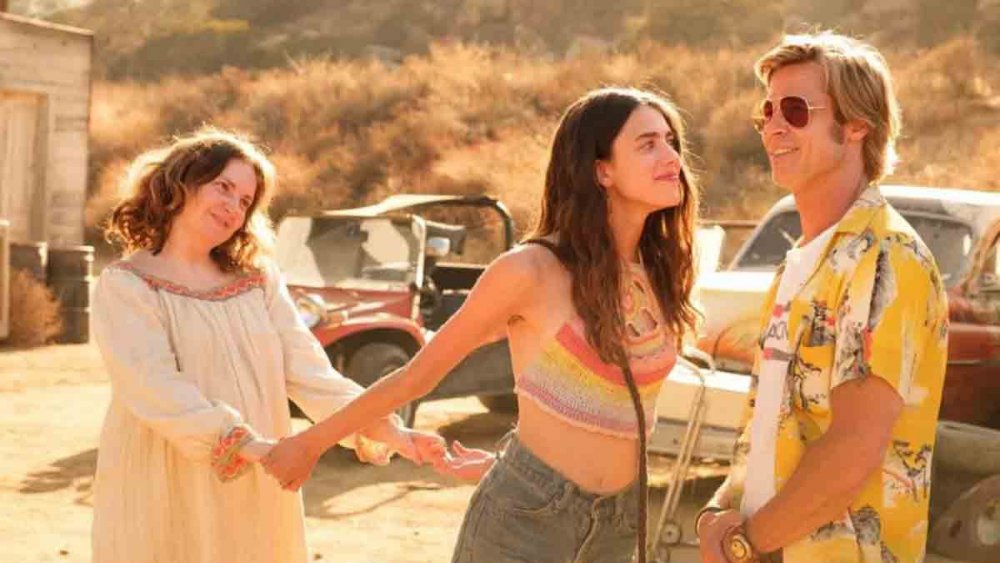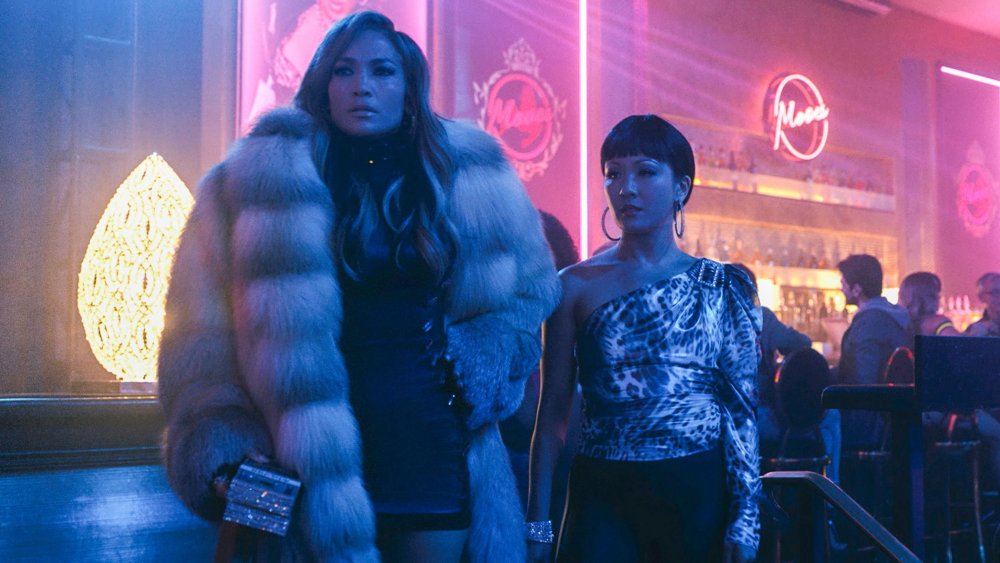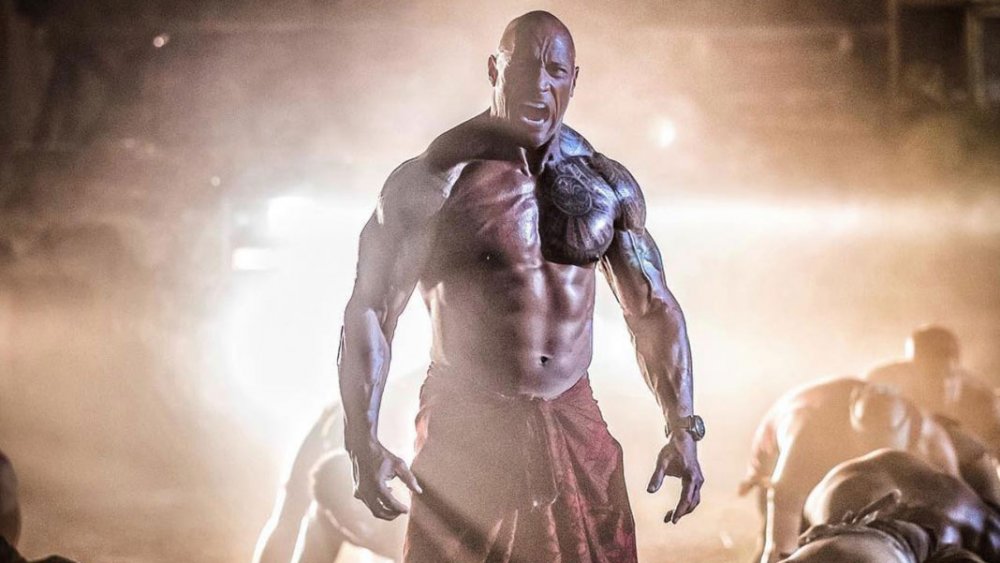The Best Movie Scenes Of 2019 So Far
The best of anything is always subjective. One person's trash is another's treasure, after all. It's true of just about every form of entertainment, and it's especially true when it comes to movie scenes. While it may logically follow that the best movie scenes of the year will come from what audiences generally consider to be the best movies of the year, it's also true that sometimes the best scenes come from movies that aren't standouts by any means, but which excelled in one or two moments that roused the attention of audiences everywhere.
The best movie scenes are often the ones that strike curiosity and debate or unite an audience in complete and utter horror, hilarity, confusion, triumph, or disgust. They may land perfectly into already existing conversations regarding pop culture or society itself — but most importantly, they're also scenes that are just simply as kickass as possible.
With that in mind, these are the best movie scenes of 2019 so far. Yes, there will be spoilers.
Captain America's self-assessment in Avengers: Endgame
To understand the true greatness of the Avengers: Endgame scene in which the Captain America (Chris Evans) of 2012 faces off against the Captain America of 2023, you have to first appreciate the comment made by Scott Lang (Paul Rudd) earlier on in the film that the patriotic hero has "America's ass" — an observation that even the most ardent of heterosexual men likely wouldn't disagree with.
The technical feat of Captain America fighting himself is impressive in its own right. A combination of some seriously impressive visual effects, smart lighting, and flawless choreography by the actor and his stunt doubles make the scene utterly seamless, leaving space for all the witty comedic beats that pop up during it.
The result is a memorable scene that pays fan service without diverting from the plot. Ultimately, it's also a scene that provides a hearty tribute to a character who comes full circle by the finale. But it's the final moment that serves the greatest payoff — and possibly the funniest moment in the entire MCU. After defeating his 2012 self, Captain America takes a moment to check himself out (as you would) before commenting, "That is America's ass!"
If the Academy doesn't invent a whole new America's Ass category at this year's Oscars with which to give Evans the trophy he wholeheartedly deserves, then there's simply no justice in this world.
Tree lives her best deaths in Happy Death Day 2U
The Happy Death Day sequel may walk more of a sci-fi route than the horror pathway of the first film, but it never loses its campy, macabre sense of humor. This time, Tree finds herself waking up in an alternate reality where her mom is still alive, her boyfriend is dating her frenemy, and she's once again trapped in a time loop that resets every time she dies.
At the film's mid-point, Tree and her gang of trusty science nerds discover that they may be able to fix the time loop but that they also need to buy some time in order to test their theories and figure it out. Unfortunately for Tree, that means she has to be a human record of their work, and she also has to repeatedly kill herself so they can keep resetting the timeline. The resulting montage, set perfectly to Paramore's upbeat survival anthem "Hard Times," is a masterful sequence of dark humor which gives Tree a grim sense of authority over her life and death.
Goofy but self-aware, the scene showcases a relatively gore-free series of ghoulish deaths involving wood chippers, drain cleaner, and electrocution. But the finest involves Tree free-falling from a plane in her underwear and breaking the fourth wall to flip off the audience before exploding onto the ground right in front of her beau and his current girlfriend. It's great fun.
Billy powers up his family in Shazam!
Shazam! Is easily one of the greatest films of the year thus far, and also the most unexpectedly brilliant. If we're all being honest, did anyone truly expect for this film to be the exceptionally smart, witty, and touching delight that it turned out to be? Probably not.
The film shows its greatest hand during the climax, where Billy outsmarts cocky villain Dr. Sivana by encouraging his foster siblings to reach out for the enchanted scepter of Shazam so they can share his power among them. The kids, all of whom are delightfully eccentric in their own way, are transformed into adult superheroes who can help their new brother to save the day.
It's an uproarious moment and one that ties together the core themes of the film which pivot around the importance of family, but also the value of unconventional family set-ups. And the Shazam family, flying around the sky as adult superheroes and working together to serve up a satisfying beat down, are about as unconventional as they come.
The balletic showdown at the end of Us
The crown jewel of a film stacked with standout scenes, Lupita Nyong'o gives an incredible dual performance in this final showdown between doppelgängers Adelaide and Red in Us. Set in the underground world of the Tethered and scored by the "Tethered Remix" of Luniz's "I Got 5 On It," the scene (which was filmed in just two days) is a masterwork of perfect pacing, tone, and choreography.
Showing Adelaide and Red facing off for a final time, intercut with sequences of the two sharing a ballet recital that splits between the world above and the one below, director Jordan Peele infuses the sequence with a splintered rhythm that really ratchets up the tension.
It's a brawl that highlights what's at stake — the desire to enjoy free will in the much nicer world above ground and the opportunity for a happy life with a loving family. But it also serves the bombshell landing of the final twist Peele fiendishly throws in during the film's closing scenes: Adelaide and Red switched places when they were kids, and the woman we've been cheering for all along may have actually been the villain. It's unnerving to say the least.
Long Short's short love scene
Historically, cinema hasn't always been the most accurate when it comes to depicting sex the way the average lowly mortal has it. Rather than showing the sometimes gross, often awkward, and occasionally very brief aspects of two humans getting it on, movies instead focus on epic, perfect, showstopping sex.
Which is what makes the abrupt sex scene between Seth Rogen's hipster journalist and Charlize Theron's presidential candidate in political rom-com Long Shot all the more intriguing. It lasts approximately ten seconds and somehow both parties get are satisfied at the end of it — not just the dude. The scene drew immediate ire from some women who were understandably frustrated with the depiction of a woman reaching climax so easily.
However, that's also part of the strength of the scene: it's unexpected, a little clumsy, and wonderfully imperfect. Crucially, the strangeness of the moment doesn't go unaddressed, with both characters immediately discussing the rarity of such speedy satisfaction. In doing so, the scene provides a brief but welcome commentary regarding Hollywood cliches of apparently super easily aroused female characters.
Perhaps most interesting, though, is why the scene may have been so short. Theron has said that one of the reasons why is because she was simply "tired that day" and "didn't want to do all the work." Which, as Rogen has retorted, is much like real sex.
Keanu Reeves as himself in Always Be My Maybe
2019 has officially been the year of Keanu Reeves and it's been a long time coming, finally uniting critics and audiences in unabashedly celebrating the notoriously private actor as a rare and legitimate brand of star (and seemingly very nice man), both on screen and off.
It's an idea that the Netflix Original rom-com Always Be My Maybe pushes into center stage with pride before deconstructing Reeves' beloved status for huge laughs. The scene is set up perfectly, with Sasha (co-writer Ali Wong) waiting for her mysterious new boyfriend to arrive while on a double date with old spark Marcus (Randall Park), who is clearly already nervous about meeting the guy now dating the love of his life.
When Reeves finally walks in, director Nahnatchka Khan gives the bombshell moment the gravitas and drama it deserves. The actor glides through the restaurant in slow-motion, and brings the entire joint to a stunned halt. Understandably, Marcus is horrified.
It's a comedic gem of a scene that sees Reeves depicting a delirious version of himself: amped up, horny as hell, and full of trite attempts at poignant philosophies like, "The only stars that matter are the ones you look at when you dream." The scene is so perfectly executed and timed, hitting this Keanussance zeitgeist at just the right moment, that it practically engulfs the rest of the film.
Fyre reveals a disturbing payment plan for water
When highly-anticipated rich-kids-have-a-bad-time documentary Fyre, premiered on Netflix people across the internet produced a collective jaw-drop of memes in bewilderment over the revelations of Andy King, the long-suffering event planner of the preposterously doomed Fyre Festival.
The film is a tawdry yet captivating glimpse at what happens when a large-scale luxury festival receives only surface level planning and no reasonable logistics to make the thing actually happen. So it's unbelievable, yet painfully plausible, when at the midway point King reveals that Fyre Festival founder Billy McFarland asked him to "take one big thing for the team" (and it's a rather literal big thing) in order to get drinking water through customs.
But it isn't just McFarland's audacity in asking a gay member of his staff to perform a sexual act on a man which continues to prompt online conversation. It's also King's devoted acceptance that he simply had to do what McFarland said in order to save the festival. "Can you imagine?" he asks. "In my thirty years of career, this is what I was willing to do. "
Understandably, King actually requested the filmmakers remove the anecdote from the documentary, but was apparently told by director Chris Smith, "Without that scene, there isn't a documentary." Smith wasn't wrong. The disquieting moment is the linchpin of the entire shocking debacle, and is sadly representative of a gig culture economy where workers are constantly asked to go above and beyond for their job.
Stan Lee's touching Captain Marvel cameo
The tributes were rightfully endless when comic book legend Stan Lee died at the grand age of 95 in November 2018. As well as helping to create some of the most revered comic book heroes of all time, Lee remains an esteemed pop cultural icon — one whose status as a legend was repeatedly championed in all the cameos he did within the Marvel Cinematic Universe.
That's what makes his cameo in Captain Marvel so damn emotional. If you didn't spring at least a single tear in the cinema over his appearance, and Carol Danvers' (Brie Larson) knowing smile in his direction, then you may just be dead inside.
Set in 1995, the scene shows Lee reading the script for Mallrats, a film he likewise enjoyed a brief cameo in during a scene opposite Jason Lee. Turns out it wasn't just audiences who got a lump in their throat during the scene. Mallrats filmmaker and comic book aficionado Kevin Smith confessed that he was "a blubbering mess" after watching it.
Having Lee cameo as himself in the scene provides a loving and unique tribute to the man to whom pop culture owes so much. But it also highlights one of the greatest aspects of many of the recent films of the MCU: their ability to be self-aware while providing emotionally searing moments that positively stick with fans.
The messy knife fight in John Wick: Chapter 3
Let's be honest. John Wick: Chapter 3 — Parabellum is bulging with outrageous set pieces and scenes that could, and should, be on this list. Between Wick enlisting the help of a horse and some specially-trained dogs to the large scale assault on the Continental — frankly, we're spoiled for choice. But the haphazard knife fight that takes place in the antique store is on a whole other level.
Director Chad Stahelski, a huge Sergio Leone fan, has stated that the scene is "a direct ode to The Good, The Bad, and The Ugly," with Wick looking for an antique gun that he can put together to fend off his attackers. In the chaos of finding and building the weapon, however, Wick finds himself engaging in a clumsily realistic knife fight which amounts to little more than a bunch of dudes hurling sharp objects at each other, and failing to make most of them actually stick.
"It's just reality. Everybody has thrown a knife and it's not stuck in and bounced back off," Stahelski told Polygon. "We've got all these assassins throwing knives and nothing's sticking and one sticks in here and that one doesn't... We just thought that'd be hilarious". The result is a near-perfect action sequence with choreography as well-timed for tension as it is for comedy.
Charlotte and Lizzie get revenge in The Perfection
The past few years have seen a fresh crop of woman-fronted revenge movies like MFA, Cold Hell, and Revenge bringing the well-worn genre to modern audiences. Though brilliant, these movies don't exactly challenge the formulaic nature of their predecessors. Enter Richard Shepard's The Perfection, a film with such a twist on the revenge movie so violently unexpected that it legitimately made audiences sick.
One of the ways the movie excels is in sparing the audience any gratuitous scenes of the acts for which the female protagonists are seeking revenge. In fact, the movie only really becomes a rape revenge narrative in the final act of the film, wherein Lizzie (Logan Browning) and Charlotte (Allison Williams) reveal their allegiance after becoming lovers, and then enemies, following their initial professional rivalry.
Influenced by exploitation movies and the work of Park Chan-Wook, the scene in which Lizzie and Charlotte team up to kill sexually abusive music mentor Anton (and the rest of his savage team) is a symphony of violent retribution stacked full of twists and surprises. That all brings us to the final shot of the movie: an epilogue in which Charlotte and Lizzie play the one cello together as Anton — now limbless, with his eyes and mouth sewn shut — is forced to listen in motionless silence. Is it ridiculous? Yes. But is it also insanely, perversely satisfying? You betcha!
Hoboman kills his biggest critic in Velvet Buzzsaw
Dan Gilroy's sharp art-world satire divided critical and audience consensus due to the film's bold blend of campy horror, unsubtle symbolism, and scenery-chewing performances. Regardless, it remains a unique movie beloved by those who happen to appreciate such things. With a story that tenuously follows some literally killer artwork and a set of pretentious art industry brutes who are subsequently murdered by the works they rip to shreds in their critiques, Velvet Buzzsaw is heaped full of statements regarding the dangers of reducing art to a commodity.
There's no moment in which this idea shines brighter than the one in which savage art critic Morf (Jake Gyllenhaal, in top form) is brutally pursued and killed by an artwork called Hoboman, a piece critiquing the lack of value placed on human life. Infusing the scene with some delicious sprinklings of irony is the fact that this is the very same artwork that Morf renders valueless at the beginning of the film when he serves up a critique about it that sends the piece into indefinite storage.
Watching Hoboman trap and snap Morf into an early grave provides some delectably poetic justice at a time when the role of art (and the critics who can kill it) remains a hot topic of conversation.
Christian's disturbing sex scene in Midsommar
Nobody expected Ari Aster to serve up even a single scoop of good times after serving up ten scoops of total nightmares with his debut horror hit Hereditary. And though it's hardly National Lampoon's Swedish Vacation, Midsommar somehow balances a continuous sense of dread with some truly dark comedy.
It's a facet which comes into its own during the film's third act turning point, when worst-boyfriend-of-the-year Christian (Jack Reynor) is drugged and coerced into having sex with a woman who isn't his girlfriend, Dani (Florence Pugh). To make it all the more uncomfortable for everyone, there's also a pack of older, naked women guiding Christian to completion because, well... why not?
The scene plays out like the acerbic punchline of a perfectly crafted joke. It's the oddly inevitable conclusion of several plot lines that include Christian eating a love-spell pie baked with one disturbing ingredient and Dani knowing from the very first scene of the film that her boyfriend is going to leave her — a fact made all the more devastating when she catches him in flagrante with half the population of the town.
It makes for a distinctly disorienting audience experience wherein the viewer isn't sure whether to laugh or cower. Though there are obviously more powerful and horrifying scenes in Midsommar, this is the one that best showcases Aster's flair for subverting audience expectations in the most surprising, shattering way possible.
Arthur's victory dance in Joker
The dance of freedom. The death bells. The instant viral sensation of Arthur Fleck (Joaquin Phoenix) shimmying a one-man bump and grind down a set of steps to "Rock and Roll Part 2." Todd Phillips' Joker has been one of the most talked about (and divisive) movies of the year. And while there are plenty of scenes in the film that are more uneasy or thematically significant, it's the image of Fleck victoriously celebrating his descent into violent dominion that has become instantly iconic.
Understandably, it became an instantaneous meme, blended with everything from Peppa Pig to The Simpsons, lending it a potent cultural currency. The Bronx-based steps where the scene was shot even became overrun by tourists overnight, eager to snap themselves in similar poses. Some of them hadn't even seen the film yet, but understood its rich Instagrammable value.
Irrespective of whether it's the best scene in Joker, the moment perfectly encapsulates so much of the hearty debate concerning the polarizing nature of the film. For some, Fleck's jive of maddening emancipation from a world that has abused and failed him is proof of Joker's often wordless brilliance. For the naysayers, it's a testament to what they believe is an exercise in lurid superficiality — one that offers little depth in the conversation regarding disturbingly current social dangers. Whatever your opinion on it, it's likely we'll all still be talking about it for some time.
Tarantino corrects history in Once Upon in Hollywood
It's just like Anton Chekhov once said: if you're going to have a blazing flamethrower in the first act of your story, then you'd better be blasting that bad boy at the Manson Family by the final act. Quentin Tarantino does exactly that in the deeply satisfying denouement of his revisionist period flick, which sees Sharon Tate (Margot Robbie) escape her infamously grisly real-life fate while Hollywood bros-for-life Cliff Booth (Brad Pitt) and Rick Dalton (Leonardo DiCaprio) make mincemeat of Charles Manson's unhinged posse.
Offering a fantasia of bloodshed that relies heavily on the grim subtext of Tate's murder to draw elation and laughter from the audience, Tarantino wades into absurdist territory in showcasing Booth deploying his stuntman skills to enact some real-life violence against some very bad people. Skulls are smashed, dog food cans become missiles, and grisly slapstick abounds. All the while, a wasted Dalton floats in his pool with a gigantic pair of headphones, blissfully oblivious to the violence happening inside his own home.
Tarantino has been repeatedly questioned on his stance about whether on-screen violence influences real-world violence, and has remained unchanged on his opinion that "Real-life violence is real-life violence. Movies are movies." Once Upon a Time in Hollywood, and particularly its splatter-happy finale, may be his boldest statement about it, bringing two characters who work with fictional violence into a moment of real-world trauma. And in doing so, the filmmaker offers a corrective fairy-tale ending for a ghastly, historical massacre.
Usher hits the club in Hustlers
Lorene Scafaria's crime flick Hustlers might be one of the most unexpectedly brilliant studies of the 2008 stock market crash put on film. Following a troupe of strippers who steal thousands of dollars from wealthy men after the crash puts a colossal dent into their business, Hustlers provides a stark distinction between American hedonism prior to 2008, and the hard-living recession that followed. In recalling the last great moment of the strip club (and possibly even America) where she and her girls worked prior to the crash, Destiny (Constance Wu) describes the night that Usher came to party, and the resulting scene is a lavish portrait of greed and exuberance.
Filmed using actual Benjamins (because, as Wu recalled, Scafaria thought "fake money looked too weird") and featuring Usher playing himself, the scene is as much a jubilant fantasy of late-00's excess as it is an unabashed nostalgic trip, all soundtracked by Usher's "Love in This Club." The result is a scene that relishes in being meta, all the while pulsating with the dramatic irony that this house of Benjamins is about to fall at any moment. As Scafaria told Thrillist, the scene is pivotal for many reasons. "I think that we were all culturally peaking before the crash. I think that pop culture was... reaching a high point. Everyone was living in excess. It felt like money was raining from the sky and then, obviously, it wasn't the next."
The Samoan showdown in Hobbs & Shaw
Fast and Furious franchise fans know what to expect with the arrival of every new film: bigger, better, and even more preposterous action than the last. The Samaon showdown of Fast and Furious Presents: Hobbs & Shaw truly stepped up the game and paid fan service to those who have long delighted in the absurdly superhuman abilities of the film's macho hard-men. This time, Dwayne Johnson's Luke Hobbs pulled down a helicopter with his bare hands, setting a new precedent for the franchise's delirious showcases of machismo.
But it was also far bigger than just a mad flex of hypermasculinity. Set in Samoa with a huge cast of Polynesian actors on hand to help take down Idris Elba's genetically-enhanced mercenary, the scene utilized a culture that rarely receives on-screen representation for one of the franchise's biggest set pieces. Screenwriter Chris Morgan even incorporated stories from Johnson's upbringing to lend the scene some familial authenticity in developing a grounded backstory for Hobbs, with Johnson's cousin (Joe Anoaʻ'i, best known as the wrestler Roman Reigns) also starring in the scene. Johnson told The Ringer, "It was a real opportunity to showcase one of my own authentic cultures to the world."
Subsequently, the scene blends high-octane action with genuine pathos, exploring the all-too-relatable stress that can arise when you make a long-delayed return back home (to discover your mom has thrown away all of your precious belongings, no less). But with a whole bunch of fisticuffs and explosions that thankfully don't come to pass in our own homecomings.
The birthday bloodbath in Parasite
Offering a searing satire that explores ever-widening class divides, Bong Joon-Ho's bleakly comic masterpiece Parasite provides a poignant and shocking narrative full of harrowing and unexpected twists. Exploring the story of a destitute family conning their way into working as individuals for an obscenely wealthy family, the film builds to a gruesome conclusion in which the poor are forced to fight among themselves for even the most lowly and awful of scraps. Every theme explored by Joon-Ho comes to a harrowing head during the birthday party in the final act, during which a man who's been living in the basement of the rich family's home emerges for a violent act of vengeance.
It's an avalanche of bloodshed that arrives seemingly out of nowhere and which escalates to tragic ends. Those who live in servitude and (literally) beneath this rich family end up facing off against each other rather than acknowledging the true villains who maintain their struggle — the rich family who are oblivious to their suffering. For a film that delights in Joon-Ho's self-described brand of "offbeat humor," the unpredictable, grisly sequence announces the core message of the film with a guttural punch that leads directly to a morose conclusion. As the filmmaker told Vulture, "It's quite cruel and sad, but I thought it was being real and honest with the audience."
